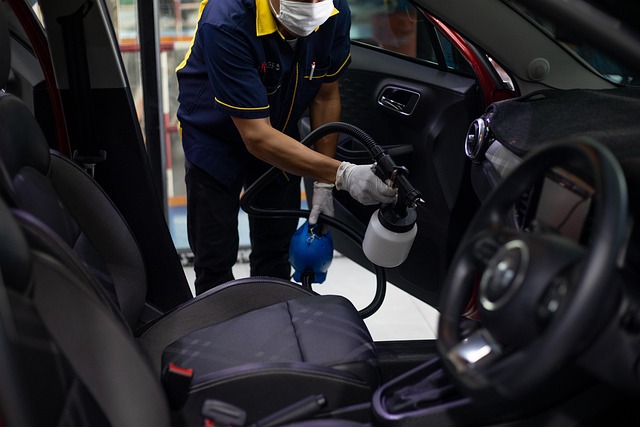How Car Cleaner Spray Works for Interior and Exterior Care
A car cleaner spray is a concentrated product formulated to remove dirt, grease, and stains from vehicle surfaces without the need for heavy scrubbing. Many sprays are water-based or solvent-based and can be used on interiors, exteriors, glass, and trim depending on the formulation. This article explains how these sprays work, when to choose foam or spray forms, safety considerations for different surfaces, and practical tips for selecting and using a cleaner on your car or vehicle.

What is cleaning with a car cleaner spray?
Cleaning with a car cleaner spray typically involves applying a mist or targeted stream of product to a dirty surface, letting it dwell briefly, and then wiping or rinsing away loosened soil. Sprays often contain surfactants to break surface tension, solvents to dissolve oils and tar, and pH adjusters to protect paint and fabrics. For routine maintenance, a spray can quickly remove dust and light grime from dashboards, door panels, and exterior paint without water. Read product labels to confirm the intended surfaces and any dilution instructions.
When should you use foam versus spray?
Foam formulations and liquid sprays serve slightly different purposes. Foam is thicker and clings to vertical surfaces, which increases dwell time for tougher stains on upholstery, carpets, and textured plastics. Foams are often used for deep cleaning interior fabrics because they penetrate fibers and lift soils for extraction. Liquid sprays are useful for quick wipe-downs, glass cleaning, and light exterior contamination where rapid evaporation is desired. Choose foam for targeted interior stain removal and spray for general cleaning and quick exterior maintenance.
Is car cleaner spray safe for interior surfaces?
Not all car cleaner sprays are equally safe for every interior surface. Vinyl, leather, fabric, and soft-touch plastics have different sensitivities to solvents, alkaline agents, and fragrances. For leather and natural materials, choose products specifically labeled for leather and follow conditioning recommendations. For fabrics and carpets, test the product on an inconspicuous area to confirm colorfastness. Many manufacturers include safety guidance and recommended dwell times on the label; following those instructions reduces the risk of discoloration, stiffening, or residue buildup that can attract more dirt.
Can spray products protect a vehicle’s exterior?
Some spray products include protective ingredients such as polymers, ceramic additives, or hydrophobic agents that leave a thin protective layer on paint and trim after cleaning. These sprays can enhance water beading and reduce short-term soiling, making subsequent cleaning easier. However, protective sprays are not a replacement for regular waxing or dedicated sealants when long-term protection is desired. For best results, use a cleaner that is compatible with any existing coatings on the vehicle and follow the product sequence recommended by manufacturers (clean, dry, then apply protective spray).
How to choose a cleaning spray for your car or vehicle
Selecting the right cleaner involves matching the product to the task: interior versus exterior, light maintenance versus deep cleaning, and the materials you’ll treat. Look for clear labeling about intended surfaces, biodegradable or low-VOC formulations if environmental impact is a concern, and any compatibility notes for paint, trim, or fabrics. Reviews and manufacturer data sheets can help assess performance claims, but prioritize products that provide clear usage instructions and precautions. If you’re seeking local services for professional detailing, ask whether professionals use the types of sprays you prefer or recommend alternatives for particular materials.
Conclusion
Car cleaner sprays and foams can simplify routine vehicle maintenance when selected and used correctly. Sprays are convenient for quick wipe-downs and glass care, while foam formulas often provide deeper cleaning for upholstery and carpets. Always check compatibility with your car’s surfaces, perform a small patch test when in doubt, and follow manufacturer instructions for application and dwell time. With the right product and method, a cleaner spray can efficiently maintain interior and exterior surfaces and help protect finishes between more thorough detailing sessions.






